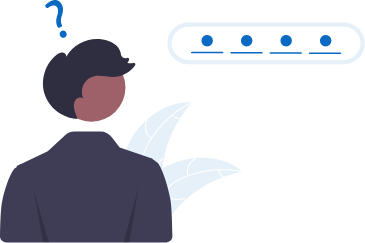With more than hundreds jobs on Qatar.co, where do you even begin? Follow our tips and tricks below to help you find better, faster.
The World Health Organisation recognises World Mental Health Day on 10 October every year and this year the theme is Mental health in an unequal world.
We felt that this presented a valuable opportunity for organisations to better understand how inequality can be both identified and addressed, in order to ensure that all people are able to enjoy and maintain positive mental health, regardless of factors like age, gender, marital status, religion, race, or disability.
One of the ways that we explore this in our managing mental health workshop is to explore the stigma surrounding mental health as well as the discrimination that can occur when that stigma is not addressed.
What is stigma?
Stigma around mental health is still prevalent in the workplace. It is defined as ‘a mark of disgrace associated with a particular circumstance, quality, or person’ and it can occur due to lack of awareness, prejudice and/or misunderstanding.
Many employers do not understand mental health, when it becomes an issue, how to spot the symptoms of compromised mental health and what to do about it. This is not helped by the fact that mental illnesses are often less visible than physical illnesses and that their impact is often underestimated, and the issue therefore ignored.
Equally, because mental health is generally misunderstood, people with mental health issues are sometimes unfairly labelled as a lazy, or selfish, dangerous, or incapable/incompetent.
This attitude can affect how they are treated at work, not to mention their career prospects, so it is no surprise that many people are reluctant to reveal that they are experiencing mental health challenges at work.
What is discrimination?
Discrimination means treating a person unfairly because of who they are. The Equality Act 2010 protects individuals from discrimination by various parties:
- Businesses and organisations which provide goods or services like banks, shops and utility companies
- Health and care providers like hospitals and care homes
- organisations that rent or sell property, like housing associations and estate agents
- Schools, colleges and other education providers
- Transport services like buses, trains and taxis
- Public bodies like government departments and local authorities.
It also protects individuals from discrimination by employers.
Under disability and equality law (governed by the Equality Act 2010), employers are prohibited from discriminating against employees on the grounds of certain protected characteristics (nine in total, which outline how people are protected from discrimination (whether intentional or not) by law). Employers need to familiarise themselves with these characteristics in order to ensure that people are given equal opportunity in the workplace. In all cases, these characteristics are protected from one-off actions as well as those that are a result of a policy.
We all have at least some of these characteristics, so the act essentially protects everyone from discrimination in one way or another.
The nine protected characteristics
- Age
- Disability
- Gender Reassignment
- Marriage and Civil Partnership
- Pregnancy and Maternity
- Race
- Religion and Belief
- Sex
- Sexual Orientation
Whilst stigma and discrimination can occur due to lack of understanding of mental health, it can also occur due to unconscious biases, which is why when exploring stigma and discrimination during our managing mental health workshops, we spend some time exploring any that we may hold.
Unconscious bias
Unconscious biases are social stereotypes about certain groups of people that individuals can form without being consciously aware of them. Everyone holds unconscious beliefs, many of which are formed in our early years and/or inherited from influencers in our lives, like parents, siblings, teachers, and bosses.
Sometimes these biases stem from our brain’s need and therefore, tendency to organise and categorise our world. Certain situations or circumstances can also trigger them: for example, biases may be more common or frequent when we are working under time pressures or trying to manage an excessive workload.
Whatever the case, unconscious bias is often the origin of stigma and it can be helpful to address any outdated beliefs and update our understanding.
“I learned by asking questions and by old-fashioned trial and error, with a healthy dose of over-communication.”
Chuck Robbins

What Do Employers Need to Do?
Employers have a duty to make reasonable adjustments to remove or reduce obstacles and to avoid disadvantages faced by people within their workplace, who are considered to have a disability.
Under the act, people with a diagnosed mental disability are protected from discrimination in exactly the same way as those with a physical disability and once a person has been confirmed to have a disability due to a mental health issue, it then becomes unlawful for them to be substantially disadvantaged or to be treated unfavourably because of it.
If we can get rid of the stigma surrounding mental health, we can better support mental health and reduce mental ill-health.




2 Comments
admin Author
Your resume is perfect. It’s keyword-optimized, industry-specified, full of achievements, backed by data, and double-checked by an expert. If it’s none of these things, stop right here and learn how to get your resume ready for a job search.
admin Author
Your resume is key to kicking off a strong job search. Not sure how yours stacks up? Let the experts at Jobster create your resume.
Comments are closed.